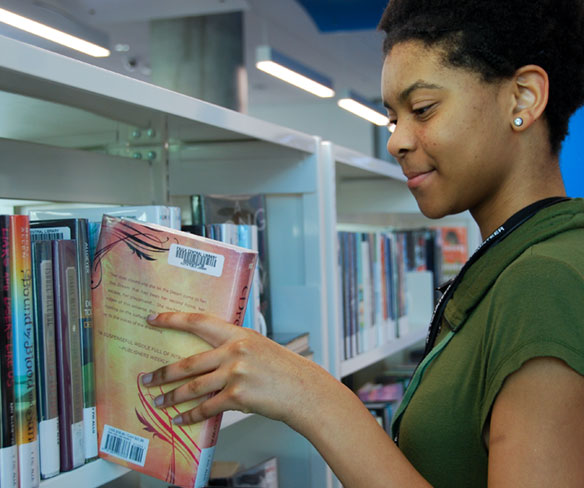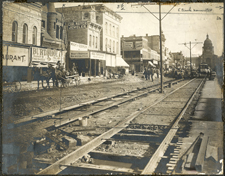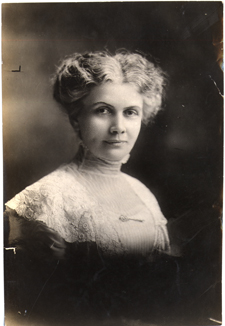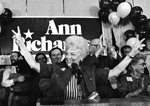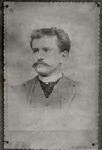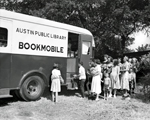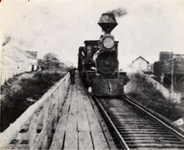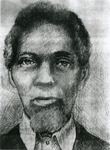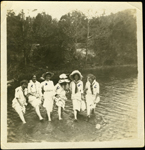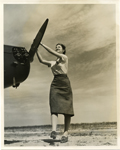
Staff Recommend
Your local librarians share their interests, what they’re reading and create recommendation lists. Or let our expert Librarians find your next great read with our Book Recommendation Form.
Recent Staff Booklists | Awards | Indie Bestsellers (USA) | New York Times Bestsellers | New Titles | Book Clubs
General Photograph Collection
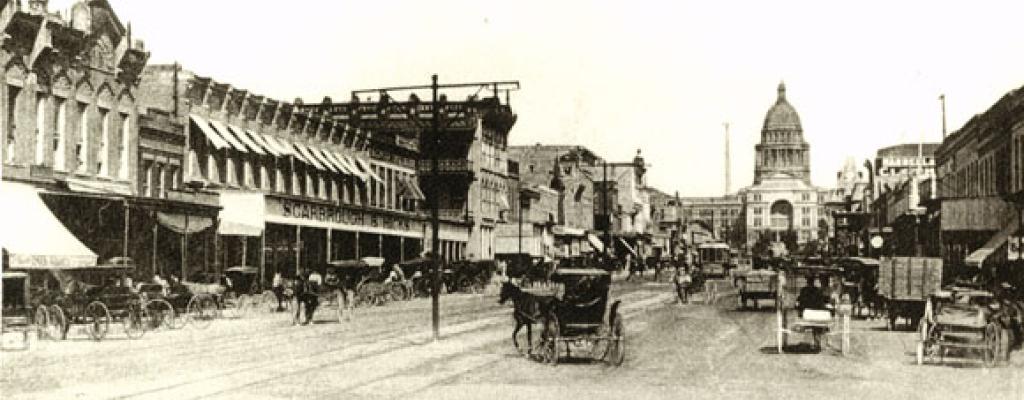
Congress Avenue looking at the Capitol, 1904, C00025 detail, Chalberg Collection of Prints and Negatives, photo by Jordan-Ellison Company
General Photograph Collection
There are approximately 100,000 prints in the General Photograph Collection. They are broken up in to three categories. The vast majority of these photographs can only be viewed on-site at the Austin History Center, though a small number have been digitized and are viewable through the Portal to Texas History.
|
Street Railroads - General, PICA 36118 |
Austin Files |
|
Anna McLaughlin Pennybacker, PICB 06865 |
Biography Files |
|
2607 Whitis Avenue, C10779 |
House Building Files The House Building files have images of structures located around the city, although the heaviest concentration of photos documents the central part of town. These photos are arranged by street address. Many addresses from this series have been cataloged in the Austin Public Library's Catalog. |
Aerial Photographs
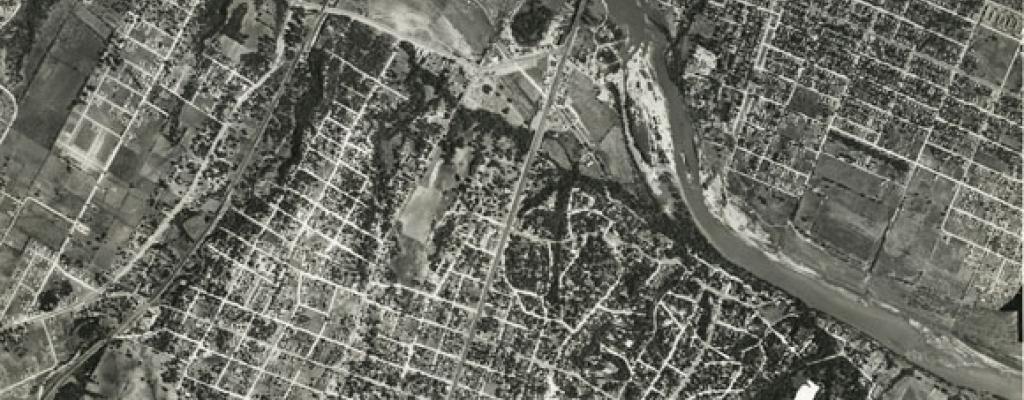
[Aerial view of Austin], September 10, 1940, 1940-COR-8-19
Aerial Photographs
The Austin History Center has Aerial Photographs of varying quality and usefulness for the years 1937 - 2007. For much more detailed information about Aerial Photographs, please download our General Inventory of Aerial Photographs. Please note that the Inventory is in draft form and contains internal links that are only accessible to AHC staff.
Many aerial photographs are also available on the City of Austin's website.
AHC History

[Austin-Travis County Collection at Main Library], 1972, PICA 01594 detail
AHC History
In 1955, the Austin Public Library established a small file devoted to local history called the Austin-Travis County Collection. Through the hard work of Helen Swanson and the collection's first curator, Katherine Drake Hart, the Austin-Travis County Collection grew from a single file folder into a separate section of the Austin Public Library's Reference department. After the opening of the new John Henry Faulk Central Library and due to the efforts of the second curator of the Austin History Center, Audray Bateman Randle, along with community leaders such as Sue McBee, then-Mayor Carole McClellan, and members of the Austin History Center Association, the original central Austin Public Library building became the Austin History Center. See more events in the development of the Austin History Center on our timeline or learn about the history of our beautiful building.
Timeline
Timeline link

-
1955 - The Austin-Travis County Collection is created as a part of the Austin Public Library.
-
1955 - Students compete in the first Historical Essay Contest sponsored by the Austin-Travis County Collection. The contest will be held each year for the next 20 years.
-
1960 - The Niles-Graham-Pease family papers are donated to the Austin-Travis County Collection nearly quadrupling the collection's size.
-
1961 - Katherine Drake Hart becomes curator of the Austin-Travis County Collection.
-
1965 - Friends of the Austin Public Library begin Waterloo Press in order to feature manuscript and photographic material from the Austin-Travis County Collection.
-
1975 - Audray Bateman Randle becomes curator of the Austin-Travis County Collection.
-
1979 - The original 1933 Austin Public Library building is occupied solely by the Austin-Travis County Collection when the new central library is complete.
-
1980 - Austin History Center Association is formed to support the creation of the Austin History Center.
-
1983 - The Austin-Travis County Collection formally becomes the Austin History Center.
-
1983 - Judge Trueman O'Quinn donates his substantial collection of O. Henry material to the Austin History Center.
-
1987 - The Austin History Center constructs a photo reproduction lab to facilitate preservation of photographic images.
-
1989 - Biruta Celmins Kearl becomes curator of the Austin History Center.
-
2000 - The Austin History Center creates new Neighborhood Liaison positions (now called Community Archivists) to broaden its acquisitions program.
-
2003 - Sue Soy becomes curator of the Austin History Center.
-
2005 - The Austin History Center celebrates its 50th anniversary.
-
2008 - Michael C. Miller becomes manager of the Center in March after serving as the Acting Manager since October 2007
-
2013 - The Austin History Center's building at 810 Guadalupe turns 80 years old.
-
2018 - The Austin History Center moves unprocessed collections and General Collection materials to the 3rd floor and 9 staff members into 4th floor offices in the John Henry Faulk building, vacated when the Central Library moved to its new location in 2017.
-
2021 – Michael C. Miller leaves his position as manager of the Austin History Center. Nancy Toombs is installed as interim manager of the Center, in addition to continuing her position as Head of Public Services since July 2011.
-
2022 – Danielle’ McGhee becomes manager of the Austin History Center.
-
2022 – Renovations begin to the interior of the John Henry Faulk building and to the exterior of the 1933 building.
History of Our Building
History of Our Building link
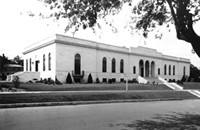
The Austin History Center is proud to be the steward of Austin's first permanent public library building. This Texas Historic Landmark is also on the National Register of Historic Places and has been open to the public since 1933. It remains a source of civic pride for Austin.
Original Construction
The land on which our building now stands was originally designated for church use and three churches once stood on this lot. After the relocation of these churches in 1913, Mayor A.P. Wooldridge successfully petitioned the state legislature to re-designate the lot for public library use. In 1925 the Austin Chapter of the American Association of University Women organized a house-to-house canvass for book donations and money for a new building, and the Austin Public Library Association was able to erect a temporary wood frame building on the site in 1926. Then in 1928 the Austin voters approved $150,000 in bonds for a permanent building, and the temporary building was moved to Angelina Street to become Austin's first public library branch, Carver Branch.
Austin architect Hugo Kuehne designed this building, and construction began in 1932. The building was designed to take advantage of local materials and craftsmen. Cordova cream limestone was selected to achieve the Italian Renaissance Revival style of the building. Ornamental wrought iron work was created by Fortunat Weigl to enhance the balconies, doors and windows. Peter Mansbendel, a Swiss master woodcarver who immigrated to Texas in 1911, carved much of the interior woodwork. "Bubi" Jessen and Peter Alidi painted the tracery frescoes on the ceiling of the arched loggia on the north side of the building.
Renovations
In 1979, when the Central Library moved into its new facility next door, the newly formed Austin History Center Association began consolidating community support so that the old central building could be renovated to house the expanding Austin-Travis County Collection. Municipal CIP bonds and grants from the Economic Development Administration, together with contributions from the Heritage Society of Austin, the Junior League of Austin, and local individuals, financed the renovation of the building. The refurbished building was opened in 1983 as the Austin History Center. It had been restored to reflect the original spirit of the building. The lighting fixtures on the porches and the rubber tile floors are original fixtures, while some other details are faithful reproductions.
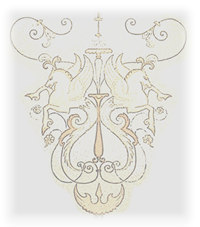
Furnishing the building's interior continued the cooperative community spirit that created the building itself. The furnishings and rugs were donated by individual Austinites and community groups. For example, the decoration of the meeting rooms was funded primarily by the Junior League of Austin. The O. Henry Room contains furniture and special research materials collected and donated by Judge Trueman O'Quinn. The Mayors' Room, now office space for the Austin History Centers Neighborhood Liaison program, contains pictures of mayors of Austin from 1839 to the present, as well as the official archives of recent mayors. The Assistance League of Austin provided exhibit cases for the lobby. The tables and chairs in the Reading Room are from the original Central Library. The Austin History Center Association has equipped a photography lab on the ground floor, provided beautiful landscaping, as well as helped to maintain the building's historical significance.
Collections
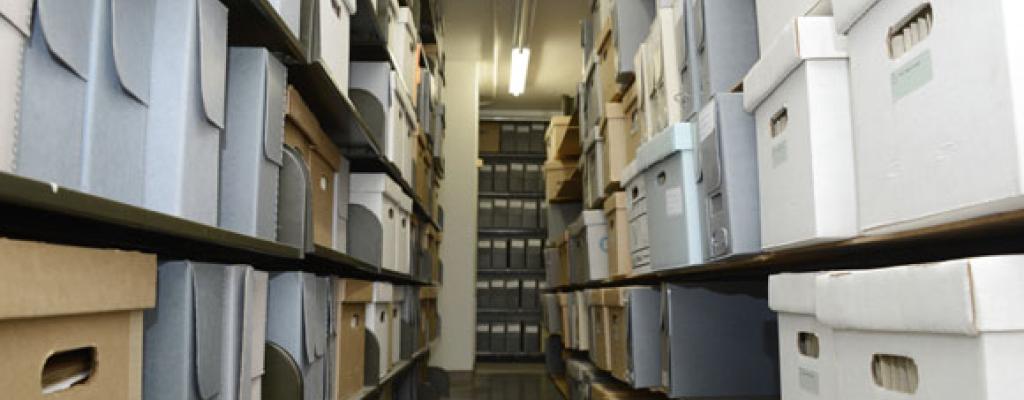
AHC collection storage area
Collections
The Austin History Center collects and preserves historical records of all types documenting Austin's history from before its founding in 1839 to the present. These records are organized into collecting units by type.
Architectural Archives
Architectural Archives link
About the Architectural Archives
The Architectural Archives was formed in 1986 as the Sesquicentennial Project of the Austin Chapter of the American Institute of Architects. Architectural drawings, job files, photographs, and personal papers of various local architects comprise these archives.
One item of interest that we hold is the Page Brothers' ink on linen drawings of the 1930 Travis County Courthouse. Also in our architectural archives are the 1938 original drawings by Arthur Fehr of the First English Evangelical Lutheran Church. The Austin History Center houses many architectural drawings from the firm of Bell, Klein, and Hoffman, among them those for the restoration of the Neil-Cochran House and those for the restoration of St. Mary's Cathedral. We also have drawings for a number of residential properties in Austin.
Over 150 architects and firms are represented in our collection, including:
- Bell, Klein & Hoffman
- Fehr & Granger
- Winfred O. Gustafson
- August Watkins Harris
- Jessen, Jessen, Milhouse & Greeven
- Kuehne, Brooks & Barr
- Lundgren & Maurer
- Page Southerland Page
Using the Architectural Archives
Architectural Archives items are accessed through a card catalog in our Reading Room and through an in-house database. Items must be viewed in our Reading Room.
Due to a lack of in-house copying facilities for oversize items such as architectural drawings, large-format reproductions are performed off-site. The Austin History Center charges a $40.00 plus tax fee for facilitating the order of the materials. Items are taken to Miller IDS for reproduction, with the charges to be paid by the requestor directly to Miller IDS. Turnaround time is dependent upon staff time and can be affected by inclement weather.
The Austin History Center reserves the right to deny copying of oversized materials if the item is deemed too fragile. All responsibility for possible copyright infringement arising from the use of reproductions must be assumed by the requestor. The work of active architects may require additional permissions from the creator before the order can be processed.
Projects & Exhibits
Architectural Archives Oral History Project
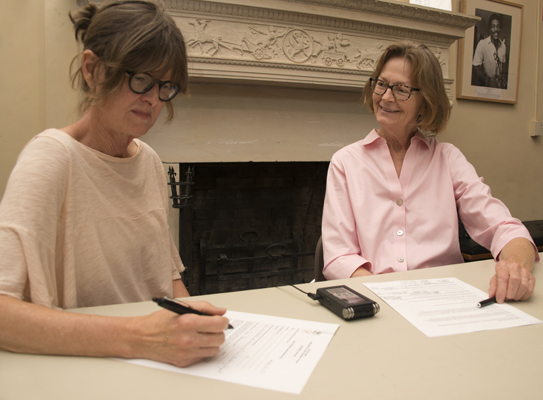 In 2015 the Austin History Center (AHC), with assistance from a grant from the Austin Foundation for Architecture, began conducting oral history interviews with Austin-area architects as one component of the AHC Architectural Archives' goal of preserving the city's architectural heritage. The objective of the oral history project is to capture information about the interviewee’s experiences in the field of architecture, their contributions to Austin's history and built environment and their thoughts on the growth and development of Austin that they have witnessed during their lives. Learn more and listen to the oral histories.
In 2015 the Austin History Center (AHC), with assistance from a grant from the Austin Foundation for Architecture, began conducting oral history interviews with Austin-area architects as one component of the AHC Architectural Archives' goal of preserving the city's architectural heritage. The objective of the oral history project is to capture information about the interviewee’s experiences in the field of architecture, their contributions to Austin's history and built environment and their thoughts on the growth and development of Austin that they have witnessed during their lives. Learn more and listen to the oral histories.
This project is ongoing with the intention of conducting four to six interviews a year, so check back periodically for new stories!
Fehr and Granger: Austin Modernists
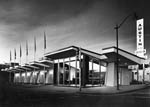 This online exhibit explores the work of mid-century modern architects Arthur Fehr and Charles Granger with photographs from the Austin History Center's collections. Photo at left: Austin National Bank Drive-In, AR-2009-014-171, Photograph by Dewey Mears.
This online exhibit explores the work of mid-century modern architects Arthur Fehr and Charles Granger with photographs from the Austin History Center's collections. Photo at left: Austin National Bank Drive-In, AR-2009-014-171, Photograph by Dewey Mears.
Archives and Manuscripts
Archives and Manuscripts link
The Austin History Center houses over 1,200 manuscript collections that contain the papers and records of City and County departments, local families, civic and cultural organizations, businesses, and institutions. These valuable primary research materials fill more than 8,000 linear feet of boxes. Detailed inventories for many of these collections are available to researchers by searching our ArchivesSpace catalog or viewing the printed guides to collections in our Reading Room. Contact Us if you would like to inquire about a particular collection.
Austin Files
Austin Files link
The AHC's vertical files are a great go-to source for basic Austin History. The collection consists of thousands of files maintained by the staff of the Austin History Center that cover many topics about Austin and Travis County. Files contain printed items such as newspaper and magazine clippings, brochures, press releases, short reports and more. They are broken up into the three categories listed below. Files can only be viewed on-site at the Austin History Center.
Subject Files
These files are arranged alphabetically by subject. Topics as general as agriculture or as specific as Barton Springs can be found in these files. Two lists of the file names provide a sense of the collection. The first list shows a T next to file listings for which we have a text file. These will contain short, loose-leaf items such as newspaper clippings, brochures, and other printed materials. File names showing a P next to them will have a photograph file available.
Biography Files
The Biography files contain information about citizens of Austin who have made an impact on their community. They are arranged by the names of the individuals or the surname of their family. Individuals and family names from this series have been cataloged in the Austin Public Library's Catalog.
House Building Files
The House Building files have information about structures located around the city, although the heaviest concentration documents the central part of town. These files are arranged by street address. Most of these have been entered in the Austin Public Library's Catalog.
Books/City Reports
Books/City Reports link
The Austin History Center general collection contains more than 22,000 items, including books, local government documents, and unpublished reports documenting the history and current activities of Austin and Travis County. The items in the general collection are searchable in the Austin Public Library Online Catalog.
Books, Directories and More
Our books and unpublished reports include:
- Books about Austin and Travis County
- Some books by local authors
- Transcriptions of oral history interviews
- Church and social club directories
- City directories
- Austin File Chronological
- Annals of Frank Brown
- Yearbooks from local schools and universities
Local business sources are popular and include:
- Business directories
- Statistical reports
- Market surveys
- Chamber of Commerce publications
- Annual reports of local companies and non-profits
Government Documents
The Austin History Center serves as the official repository for the records of the City of Austin. We also have some documents from other local government entities. Our government document collection includes:
- Census for Travis County
- Budgets
- Environmental reports
- Minutes for various boards and commissions--see also the recordings collection.
- Internment records
- Annual reports for City departments
- City Council Minutes--see also the recordings collection
Maps
Maps link
The Austin History Center has more than one thousand maps of Austin and Travis County from the mid-1800s to the present. These maps illustrate the City's changing size and shape over the years and offer invaluable clues to the history of structures and landmarks long since gone from our landscape. Use the Map Guide to review an index of our collection and to search for a specific map.
Maps in the collection include:
- Bird's-eye view maps
- Sanborn Fire Insurance maps from 1885 to the 1970s. Some Sanborn Maps are available from the APL's digital resources. Texas Digital Sanborn Maps is made available through the TexShare program, and you will need an Austin Public Library card to access it from your home computer.
- Aerial photographs from the 1940s to 1989
- Travis County Highway Maps (Texas County Highway Maps are available online, for some years, from the University of Texas.)
- Plats, abstract maps and neighborhood plats
- Cemetery maps
- Austin street maps
- City of Austin Use maps
- Topographic and geologic maps of Austin and Travis County
The Perry-Castañeda Library at the University of Texas has a number of Austin area maps available online in its Map Collection.
The AHC created this map of Austin's Freedmen Communities. The map, using a historic map from the collection as the base map and information gathered from multiple sources, shows the locations and approximate boundaries of the various freemen communities that sprang up after the Civil War.
Duplicating Maps
Due to a lack of in-house copying facilities for oversize items such as maps, large-format reproductions are performed off-site. The Austin History Center charges a $40.00 plus tax fee for facilitating the order of the materials. Items are taken to Dynamic Reprographics for reproduction, with the charges to be paid by the requestor directly to Dynamic Reprographics. Turnaround time is dependent upon staff time and can be affected by inclement weather.
The Austin History Center reserves the right to deny copying of oversized material if the item is deemed too fragile. All responsibility for possible copyright infringement arising from the use of reproductions must be assumed by the requestor. Current maps that are clearly protected by copyright are not eligible for oversize duplication.
Online Collections
Online Collections link
The Austin History Center has partnered with several other organizations to digitize some of our holdings and make them available online. Read about them below. A selection of materials from our collections is also available on our Austin History Center Digital Collections site. Online photo collections are described here, and you can also use other databases and online reference tools. Our online exhibits have additional digitized materials. For digital audio content visit our Soundcloud page, and to view some of our videos visit our YouTube page.
City Directories
 Austin city directories from 1872-73, 1877-78, 1881-82, 1885-86, 1889-90, 1897-98, 1906-7, 1912-13, 1918, and 1922 are scanned and searchable online through the Portal to Texas History.
Austin city directories from 1872-73, 1877-78, 1881-82, 1885-86, 1889-90, 1897-98, 1906-7, 1912-13, 1918, and 1922 are scanned and searchable online through the Portal to Texas History.
O. Henry Project
 The O. Henry Collection consists primarily of the short stories of William Sydney Porter (1862-1910), written under his pseudonym O. Henry. Each story is available as it first appeared in the popular magazines of the day, and these and other stories published posthumously can also be found in first edition compilation books, and later as part of his collected works. The online sampling also includes some legal documents, photographs, letters, postcards, and other ephemera.
The O. Henry Collection consists primarily of the short stories of William Sydney Porter (1862-1910), written under his pseudonym O. Henry. Each story is available as it first appeared in the popular magazines of the day, and these and other stories published posthumously can also be found in first edition compilation books, and later as part of his collected works. The online sampling also includes some legal documents, photographs, letters, postcards, and other ephemera.
Pease, Graham and Niles Families Papers
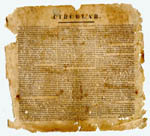 The Pease, Graham, and Niles Families Papers consist of materials related to multiple generations of the families of Elisha Marshall Pease, who was governor of Texas from 1853 to 1857 and from 1867 to 1869, and his wife, Lucadia Christiana (Niles) Pease. The collection is composed of five different acquisitions and includes personal, professional, and political documents from the nineteenth and twentieth centuries. E. M. Pease and his family were meticulous record keepers, allowing current and future generations a very detailed and intimate view into the personal and professional accomplishments of three noted American families. Included in the Papers are correspondence; agreements, contracts, and deeds; ledgers; maps and blueprints; broadsides and circulars; diaries and journals; newspaper clippings; books and magazines; bills and receipts; and photographs. This online collection through the Portal to Texas History includes a sampling of more than 100 items from the collection and represents the breadth of subjects covered in the papers.
The Pease, Graham, and Niles Families Papers consist of materials related to multiple generations of the families of Elisha Marshall Pease, who was governor of Texas from 1853 to 1857 and from 1867 to 1869, and his wife, Lucadia Christiana (Niles) Pease. The collection is composed of five different acquisitions and includes personal, professional, and political documents from the nineteenth and twentieth centuries. E. M. Pease and his family were meticulous record keepers, allowing current and future generations a very detailed and intimate view into the personal and professional accomplishments of three noted American families. Included in the Papers are correspondence; agreements, contracts, and deeds; ledgers; maps and blueprints; broadsides and circulars; diaries and journals; newspaper clippings; books and magazines; bills and receipts; and photographs. This online collection through the Portal to Texas History includes a sampling of more than 100 items from the collection and represents the breadth of subjects covered in the papers.
The Rag
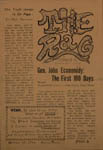 The Rag was a campus underground newspaper published by students at the University of Texas at Austin in the 1960s and 1970s. The digital collection is hosted by Independent Voices by Reveal Digital.
The Rag was a campus underground newspaper published by students at the University of Texas at Austin in the 1960s and 1970s. The digital collection is hosted by Independent Voices by Reveal Digital.
Texas History Collection
 60 books related to Texas history from the holdings of the Austin History Center have been scanned and made available online through the Portal to Texas History.
60 books related to Texas history from the holdings of the Austin History Center have been scanned and made available online through the Portal to Texas History.
Oral History/Audio
Oral History/Audio link
Oral Histories and Recollections
Austin History Center staff, along with many dedicated volunteers, have made oral history recordings documenting the rich and colorful history of more than 400 local residents and public figures. This collection also includes audio tapes recorded during historical marker dedication ceremonies, as well as tapes of local radio interviews from the 1970s. In addition, researchers have donated interview tapes created during the course of studying Austin's history. Anthony Orum, for example, donated tapes he recorded in the process of writing his books, Power, Money and the People: the Making of Modern Austin and City Building in America.
Find some samples of our recordings online, including the only known recording of O. Henry. Our Soundcloud account also has excerpts from the oral histories of Joe Lung, Emma Long, and Lady Bird Johnson among others.
Transcripts exist for a number of these oral histories and are available for use in the Reading Room. Some of the tapes also lead to manuscripts and other archival resources in the collection. You can review the Oral History Subject Guide below to find oral history recordings on specific topics. Our staff can also consult an in-house database to determine whether we have an oral history for a specific person or on any topic not included in the guide or whether transcripts exist for the recording. Check out an example of a fully transcribed recording below as well. Please contact us to ask for this search.
One of our larger oral history projects was the Emma S. Barrientos Mexican American Cultural Center Oral History Project. Read more about it and listen to some excerpts.
Music
Even before Austin declared itself the "Live Music Capital of the World," the Austin History Center began collecting and preserving examples of music from the local scene. Included in the sound recording collection are the recordings of artists such as Kenneth Threadgill, Joe Ely, the Grey Ghost, the Fabulous Thunderbirds, Uranium Savages, and Stevie Ray Vaughan. Recordings produced by local groups such as the Ebenezer Baptist Church Choir and Crockett High School are available in the music collection. Music recordings can be searched in the Austin Public Library Catalog.
The Austin Music Network
The Austin Music Network began documenting live performances in clubs and venues around Austin in 1994. The Archives of the Austin Music Network are now part of the Austin History Center collection. Music & Entertainment Television, launched by Austin Music Partners, took over the channel in 2005, and many of their shows are available at the Austin History Center.
Periodicals
Periodicals link
Over three thousand titles of current and defunct magazines, journals, newspapers, and newsletters of local interest are available here at the Austin History Center. Not only do we offer the local daily and weekly newspapers, but we have a substantial collection of newsletters published by local organizations, businesses, and neighborhood groups. We are happy to check to see if we have a particular uncataloged title. You an also use the list below to browse the titles we have.
We have a complete run of the Austin American-Statesman since 1871 on microfilm. We do not retain original copies of this title beyond three months from publication date. See the Austin American-Statesman Resource Guide for a listing of the indexes available for accessing the paper. Access to the microfilm is chronological. It is not possible to search for a person's name on the film. If you are searching for an obituary, you will need a date of death to begin your search.
The Library also subscribes to a database with historical coverage of the Statesman and two other databases with recent coverage.
Other titles that you might recognize from our collection include:
- The Rag (Available online in nearly its entirety.)
- Austin Chronicle
- NOKOA
- Texas Triangle
- Austin Business Journal
- Westlake Picayune
- El Vanguardia
- Texas State Gazette
Photographs
Photographs link
The Austin History Center's Photograph Collection contains over a million images ranging in date from the mid-19th century to the present. These images illustrate the changes in the people, events, and natural and built environment that Austin has seen through the years.
The Austin History Center welcomes donations of photographs that document the city and people of Austin and Travis County. If you are interested in making a donation or have any other questions related to photographic holdings please contact the Collections Manager. You can also read more about our donation process in general.
Collections
The Austin History Center’s extensive photographic holdings are divided among several different collections. Explore our photographic holdings with our Photography Resources Guide. The majority of our photographs are only viewable in person, on site, but we have some images available online.
Use the links below to learn more about these specific collections:
Video
Video link
Government Videos
Videos from Channel 6 or ATXN, the City of Austin government access channel, are preserved here. These recordings include City Council meetings from 1984 through the present and other government board and commission meeting recordings, such as the Parks and Recreation Board, the Planning Commission, the Charter Revision Committee, the Mayor's Committee for People with Disabilities, and the Telecommunications Commission. A full inventory of the Channel 6/ATXN recordings can be viewed here. Equipment is available for self-service duplication; just bring your own DVD-R. Alternatively, we can sell you one in our Reading Room for $3 plus tax.
Local News Broadcasts
Video recordings of television news from each of four local network affiliates--ABC, CBS, Fox, and NBC--are preserved here. These video recordings span the time period of April 1, 1984 to December 31, 2013. Videos from April 1, 1984 to September 30, 2004 are available on VHS tapes; videos from October 1, 2004 to December 31, 2013 are available on DVD. Logbooks listing the stories from the local broadcasts (up to December 2011) are available on request. Keyword searches of the newer broadcasts can done from a link on the two public access computers in the Reading Room.
Productions Concerning our Local Community
Our collection also includes video recordings produced by government agencies and nonprofit groups to inform the public. We have, for instance, videos produced by the local Police Department and Bat Conservation International. In addition, the collection contains videos produced for pure entertainment by local individuals or groups. All of these videos produced to educate or entertain are listed on the Austin Public Library's online catalog (use the search bar at the top of this page).
Duplication
The Austin History Center offers duplication of some, but not all, of our audio and video items for a fee. Duplications are considered on a case-by-case basis and are handled through the same operation as our photographic reproductions. Contact our audiovisual archivist for more details.
YouTube
Visit and subscribe to our YouTube channel to see clips of videos from some of our collections.
Exhibits

View of the "Backwards in High Heels" exhibit, 2014
Exhibits
The Austin History Center presents one to two large-scale exhibits related to Austin history each year. Two additional smaller photograph exhibits take place in the David Earl Holt Memorial Photo Gallery twice a year on a staggered schedule to ensure that there is always something exciting to see at the Austin History Center.
Our exhibits are created by AHC staff using our existing collections of photographs and documents. Our exhibits serve as an important vehicle for outreach to the community, as we often time them with anniversaries and other exciting events happening in the larger Austin area. Exhibits are always free and open to the public for viewing.
Check out what's showing now.
Current Exhibits
Current Exhibits link

Now on view in the Holt Gallery
In/Visible A: The Building of an Asian American Film Community
This vibrant exhibition reveals Austin Asian American Film Festival's (AAAFF) evolution from a small film-centric event to a major cultural arts organization.
In/Visible A provides a comprehensive look into AAAFF's history, featuring photographs, posters, program guides, and other records. The exhibit traces the festival's origins and growth, highlighting its role in amplifying Asian American, Native Hawaiian, and Pacific Islander (AANHPI) voices in Austin's cultural landscape and its emergence as a hub for storytelling and cultural exploration.
This retrospective aims to emphasize the significance of representation in media and the influential role of film in community dialogue. It offers visitors insights into AAAFF's dedication to showcasing diverse AANHPI narratives and its contributions to Austin's cultural diversity.
*Artwork displayed in the banner was created by Emily Ding
Traveling Exhibits
Traveling Exhibits link
The Bobby Dixon Kollective Fusion Poster Exhibition: Celebrating Hip Hop Through Artistry and Design

This exhibition celebrates the 50th Anniversary of Hip Hop through the work of local artist and designer Bobby Dixon of Kollective Fusion (AKA KLCTVE Design + Illustration). For two decades, Bobby has produced screen-printed concert posters for local, national, and international acts. The posters in this exhibition showcase Bobby's artistic design in works created for prominent hip-hop performers that have graced Austin stages. The posters in this exhibit were all created by Bobby Dixon and have been thoughtfully curated to commemorate the 50 Years of Hip Hop project led by the Queens Public Library, in collaboration with more than twenty museums, libraries, and archives from across the nation.”
On display March 26th - May 23rd | Location: Ruiz Branch Library - 1600 Grove Blvd, Austin, TX
We’ll Just Rock for Ourselves: Selections from the Lisa Davis Photograph Archive
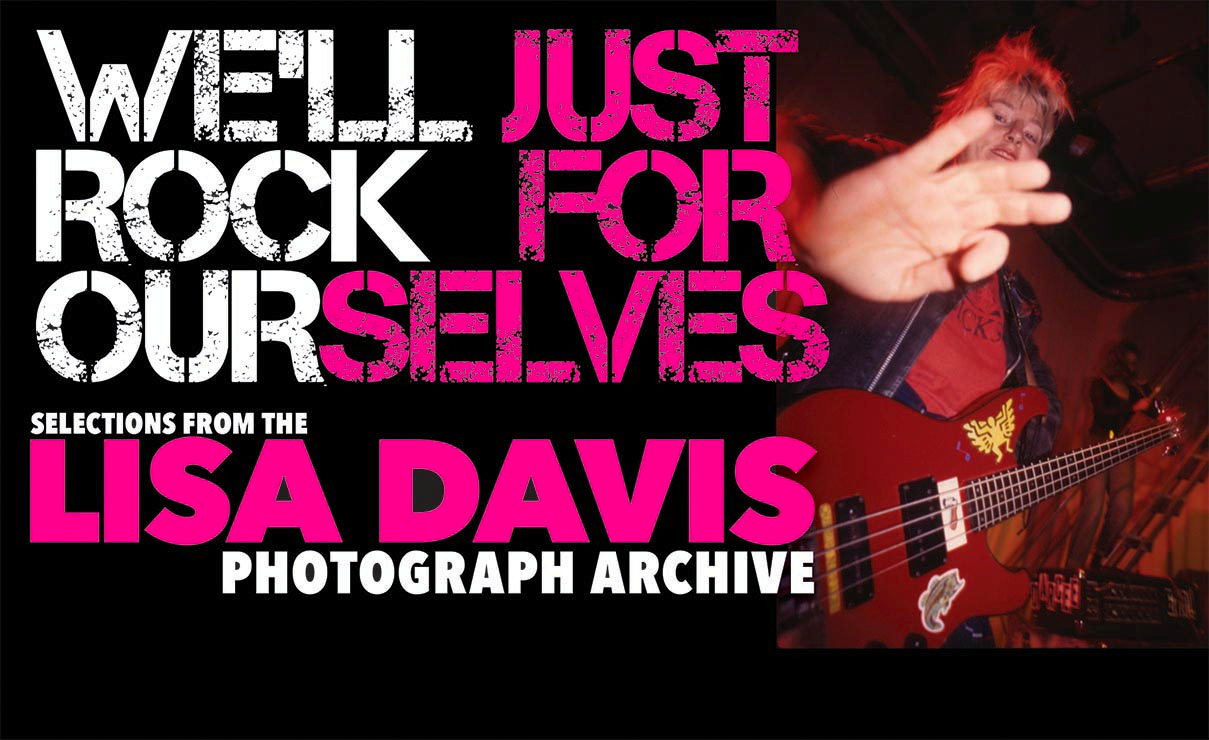
We’ll Just Rock for Ourselves presents photographs from the Lisa Davis Photograph Archive (AR.2011.022) that document Austin’s lesbian musicians and LGBTQ activists of the 1990s. The title is taken from the Power Snatch song, “No Thanks (We’ll Just Rock for Ourselves),” which was written in response to the song “Intellectuals Rocking for Women” by the all-male band the Pocket FishRmen. Photographs and video footage of Power Snatch, the 1990s all-female punk band of Cindy Widner, Darcee Douglas, Terri Lord, Laura Creedle and Kate Messer are featured in the exhibit along with documentation of the bands Girls in the Nose, The Gretchen Phillips Xperience, Sincola, Two Nice Girls, and Swine King. The genres of these bands ranged from folk to experimental to funk, but at the core was the punk ethos of nonconformity and individuality.
On display June 2023 - June 2024 | Location: Austin Public Central Library - 710 W Cesar Chavez St, Austin, TX 78701 4th floor
Online Exhibits
Online Exhibits link
Art and Archives: Veronica Ceci at the Austin History Center, September 18, 2022 - January 8, 2023
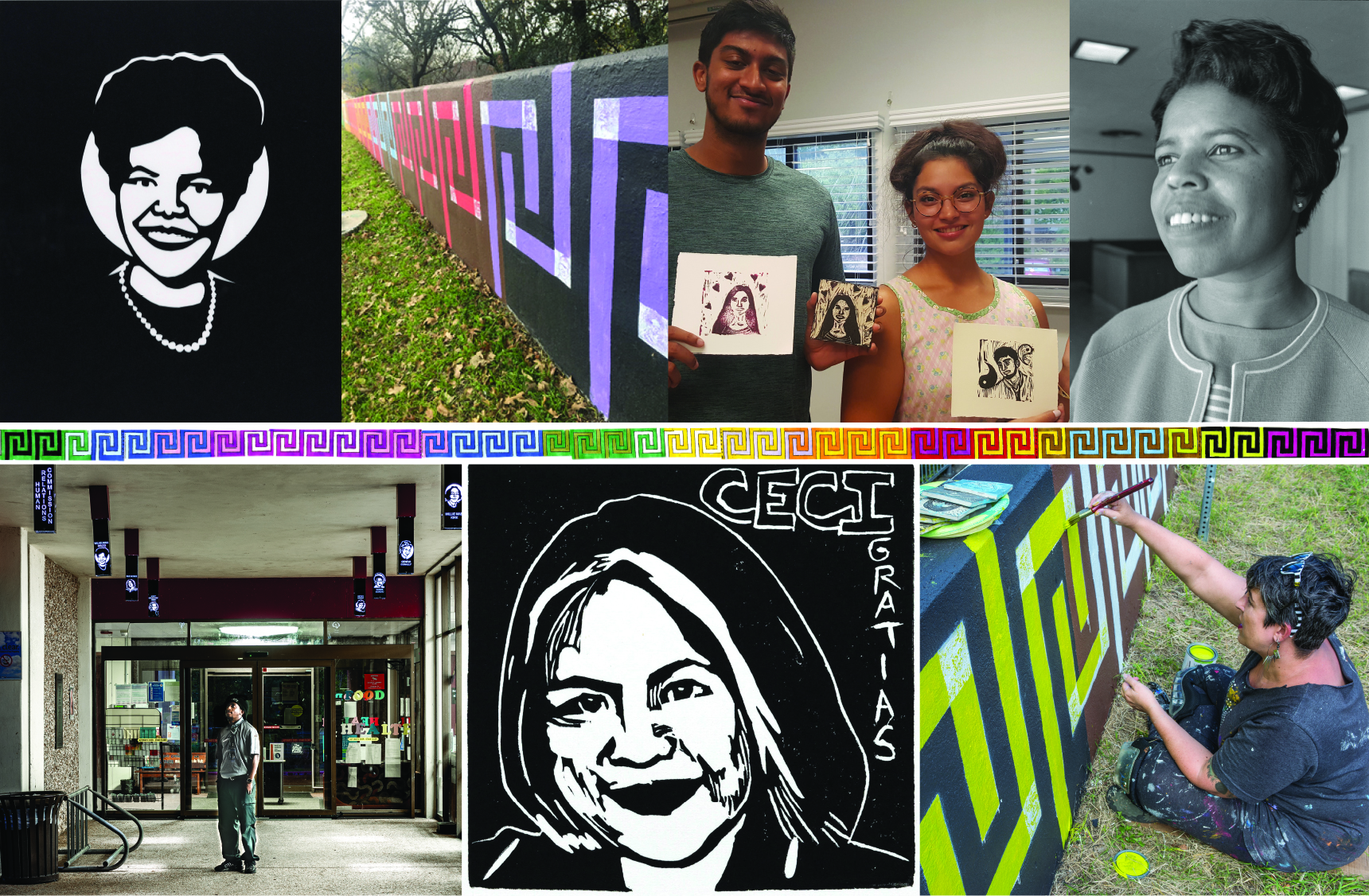
This exhibit presents a selection of photographs, sketches, prints, archival materials, and artifacts documenting Austin artist Veronica Ceci's work on their public art projects Meander (2018) and Quinquagenary (2021).
Austin Proud: A History of Pride Parades in Austin, 1971-2002, August 2022 - June 2023


This exhibit presents photographs, flyers, and clippings from the Austin History Center collections documenting the history of Austin's LGBTQ Pride parades and marches from 1971-2002.
Taking it to the Streets: A Visual History of Protest and Demonstration in Austin, July 31, 2018 - October 28, 2018
![]()
This exhibit presents a snapshot look at how the public confronted the political and social issues of their time. Diverse images from a variety of Austin History Center collections highlight Austin residents in their earnest efforts to create social change in their communities
Our Community, Our Voice: Photographs from The Villager Newspaper, January 30, 2020 – May 22, 2022
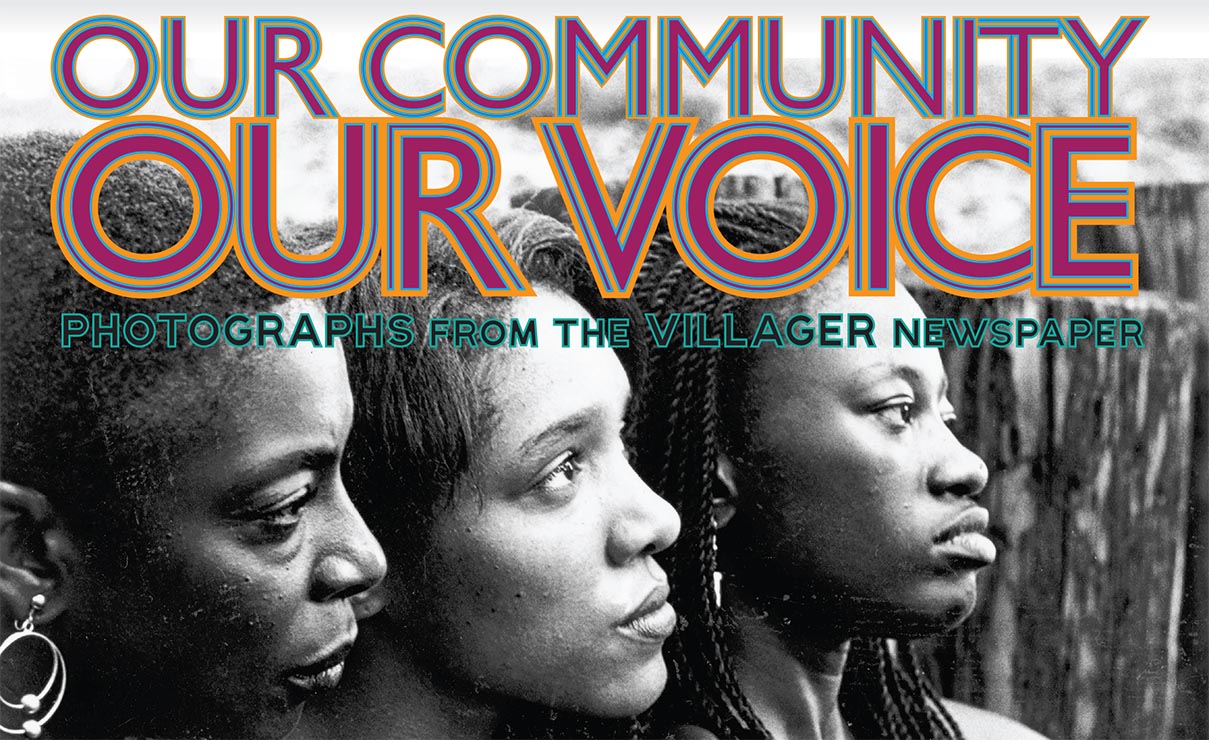
This exhibit presents a selection of photographs from The Villager Newspaper Photograph Collection (AR.2001.002) that capture local community members in striking images, illustrating the vibrancy of Austin’s black population. Marching bands, community leaders, theater groups, protests, musicians, churches, and neighborhood groups portray life in black Austin through the decades.
Perlas ng Austin (The Pearls of Austin)
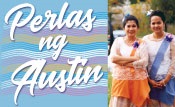
This virtual exhibit was made in collaboration with the Austin Filipino-American Association (AFAA), Asian American Resource Center and the Austin History Center's Asian American Community Archives Program as a celebration of the Central Texas Filipino community.
Discovering Place: Images from the St. Edward’s University Documentary Photography Project, November 4, 2019 – January 19, 2020
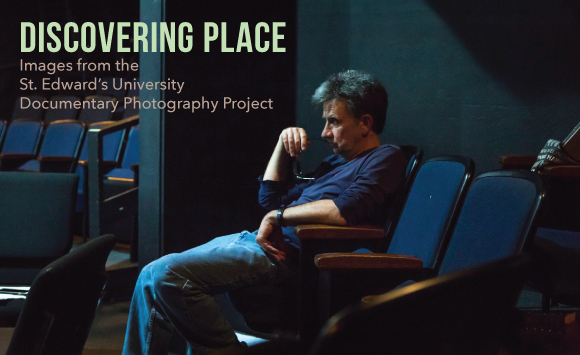
The St. Edward's University Austin Documentary Photography Project is a partnership between St. Edward's University and the Austin History Center wherein students learned how to create visually engaging and intellectually challenging stories of the people and places of Austin. The partnership resulted in the St. Edward's University Austin Documentary Photography Project Collection (AR.2019.026), consisting primarily of digital photographs documenting various facets of the Austin area community as selected by the student photographers.
Treat Me Like a Saturday Night: The Joe Ely Photographs from the Cindy Light Collection, July 30, 2019 – October 27, 2019
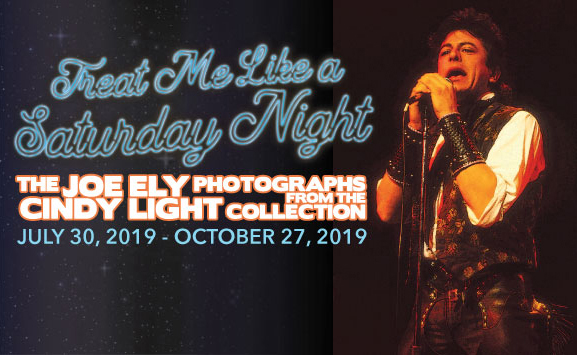
Cindy Light is an Austin-based photographer who shot many performances of Austin musicians such as Stevie Ray Vaughan, Joe Ely, and Doug Sahm as well as international acts such as Sting, Michael Jackson, and Paul McCartney. This exhibit highlights photos from her collection (AR.2019.016) that span 1986-1990 and primarily feature Joe Ely with bandmates David Grissom, Jimmy Pettit, and Davis McLarty who represent Ely’s late 1980s – early 1990s heyday.
Austin Icons of the 1980s: Selections from the Bill Leissner Photograph Collection, April 30, 2019 – July 21, 2019
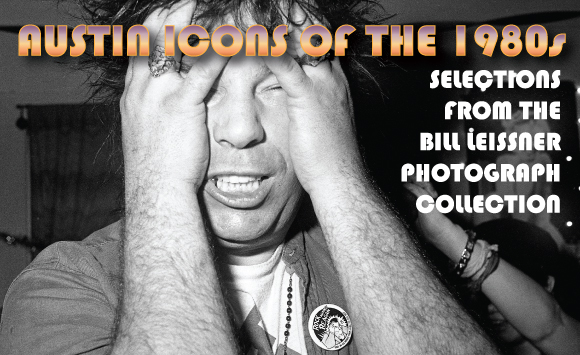
In 2016 Bill Leissner began the process of digitizing his 100,000-image archive of Austin performance, politics, and social culture. This exhibit is the first result of these efforts – a brief selection of 16 images from his archive (AR.2019.004) representing icons of 1980s Austin, at least icons through the lens of his camera.
Vietnam to Austin: Restoring Community, February 21, 2009 - July 17, 2009

Explore the history, transition, and contributions of local Vietnamese Americans in Austin. This exhibit presents a selection of powerful personal stories and photographs from the orginal large-scale 2009 exhibition.
Tune In To Health: A Radio Program for Travis County Rural Schools, February 5, 2019 – April 21, 2019
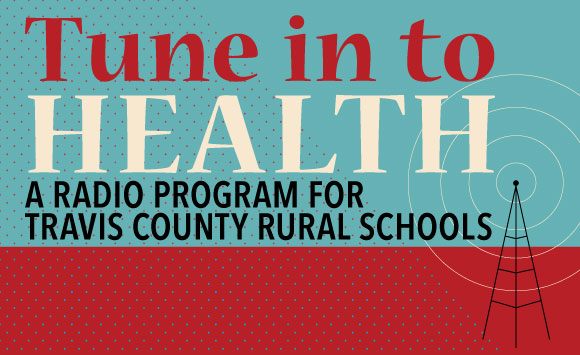
This exhibit presents photograph selections from the Texas Extended School and Community Health Education Program Records (AR.2002.017) archived at the Austin History Center. The collection features over 200 black and white photographs from the 1949-1950 school year of the Healthy Living in Our County radio program, a public health education initiative tailored for Travis County rural school classrooms. The exhibit images provide a rare glimpse into these rural school communities, capturing student activity, school segregation, home living conditions, school infrastructure, and engagement with the Healthy Living in Our Country radio curriculum.
We’ll Just Rock For Ourselves: Selections from the Lisa Davis Photograph Archive, April 24, 2018 – July 22, 2018
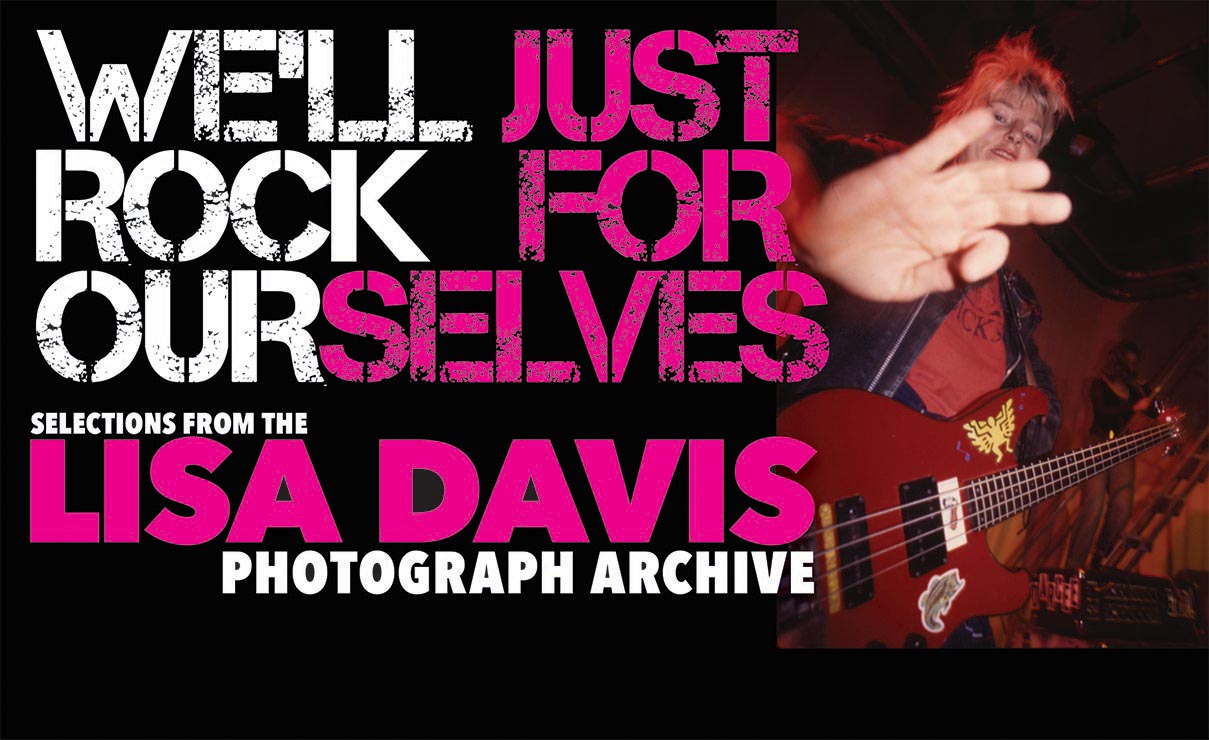
This exhibit presents selections from the Lisa Davis Photograph Archive (AR.2010.022). The exhibition focuses on Davis’s documentation of the lesbian music community in Austin during the early 1990s.
Clearing Stones Sowing Seeds: Photographs from the Travis County Negro Extension Service Collection, February 6, 2018 - April 15, 2018
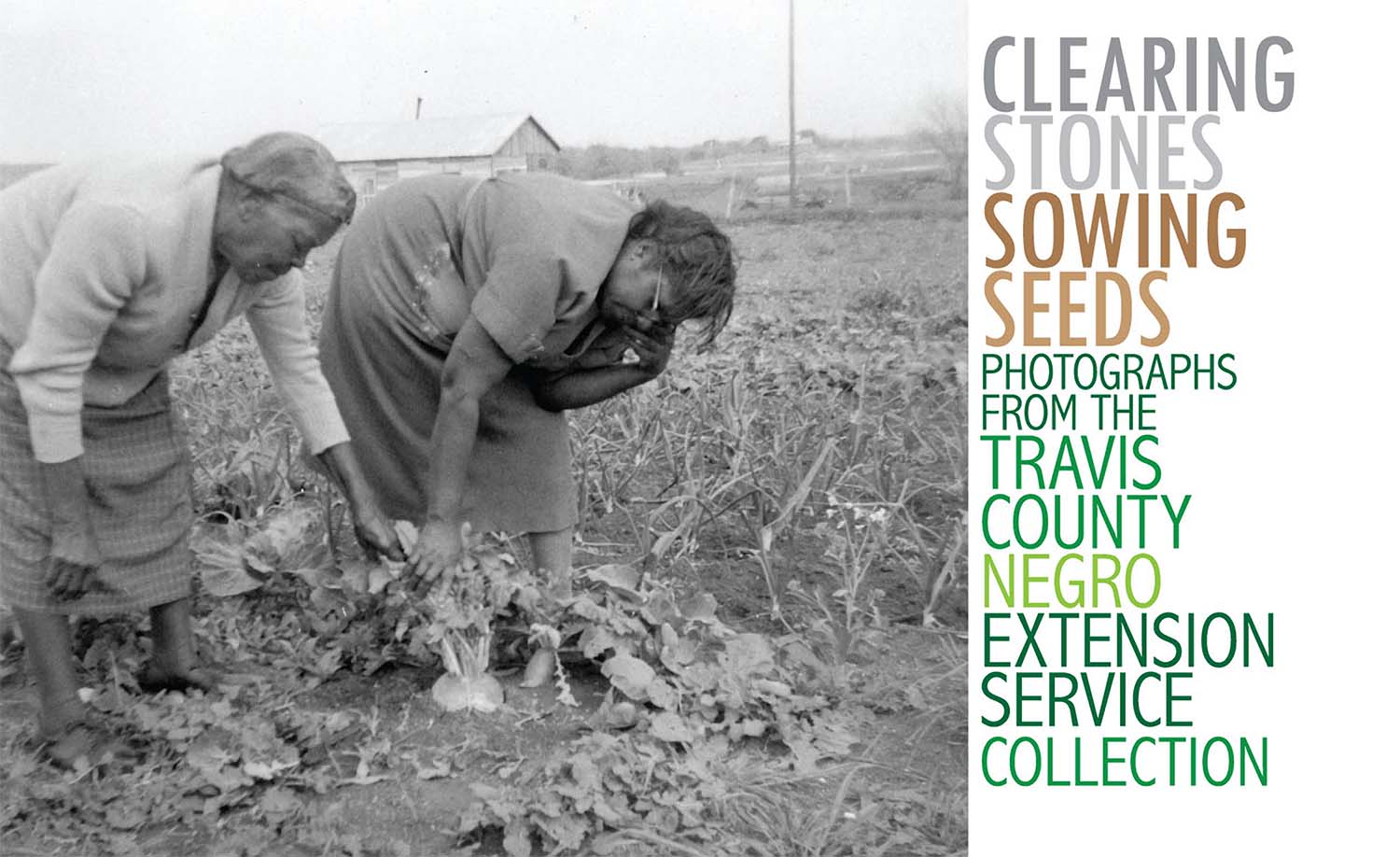
This exhibit presents selections from the Travis County Negro Extension Service Photography Collection (AR.2000.025). The photographs, taken between 1940 and 1964, document the variety of services and educational programs offered by the Extension Service, including animal husbandry, crafts, domestic education, gardening and agriculture, and home improvement.
Early Chinese Families of Austin
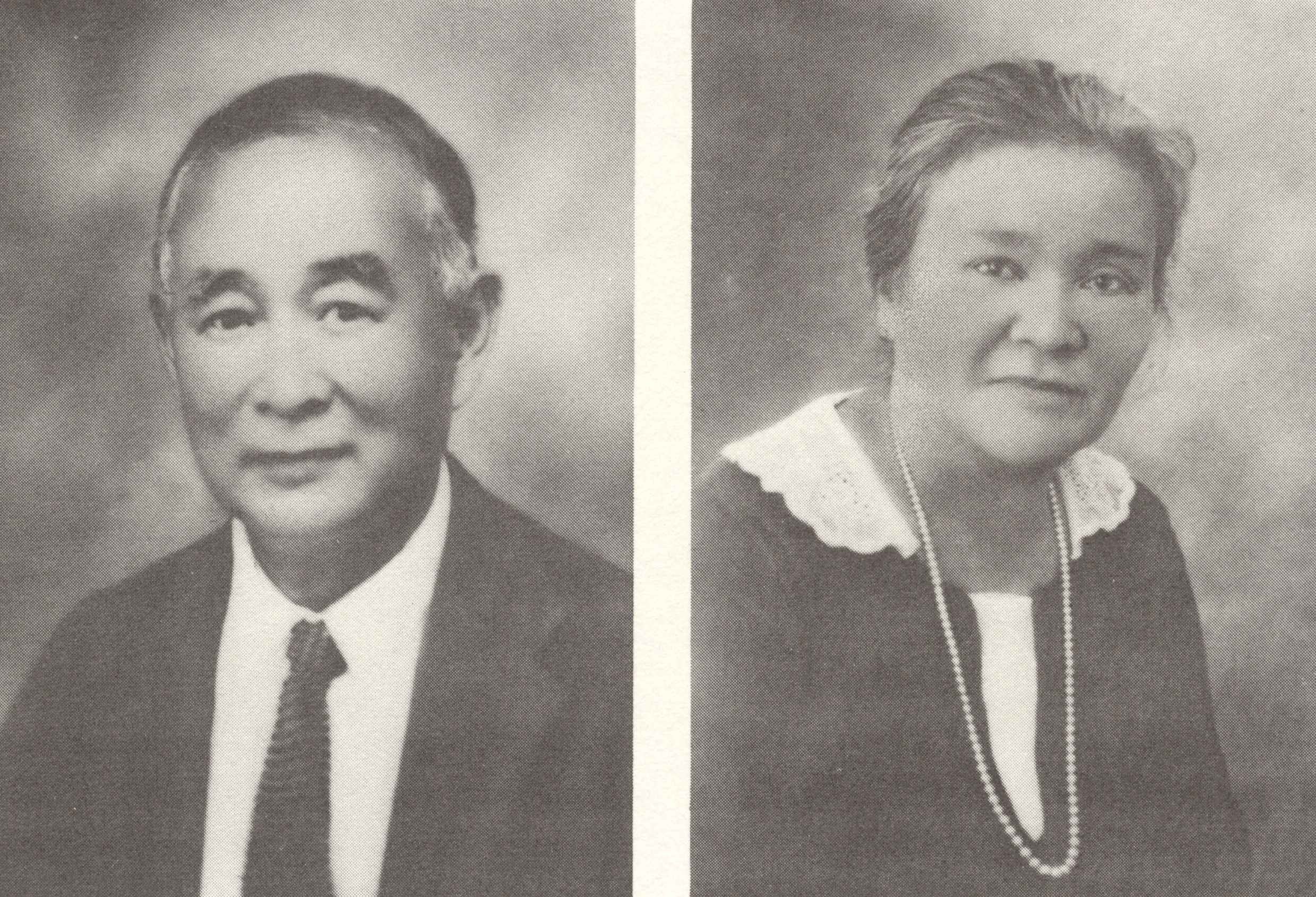
Asian American families who ended up in Austin built a life for themselves by opening up businesses and immersing themselves into the community. All of their hard work paved the way for future immigrants and Asian Americans who settled down in Austin.
Fehr and Granger: Austin Modernists

AR.2009.014(171)
An exhibit of photographs documenting the works of Mid-Century architects Arthur Fehr and Charles Granger.
Backwards in High Heels: Getting Women Elected, 1842-1990
This exhibition is the Austin History Center’s look at the local women who have played a significant part in politics in Texas’ capital city.
O. Henry in Austin
In 2010 the AHC partnered with the Texas General Land Office and the State Preservation Board to create an online collection of O. Henry materials at the Portal to Texas History. The collection includes photographs, original manuscript material, first printings of many of his short stories, and scans of some of his collected works.
Austin Public Library Jubilee: 75 Years of Building Community
The Austin Public Library celebrated its 75th anniversary in 2001. The exhibit traced the history of the Austin Public Library from its humble beginnings in a small upstairs room on Congress Avenue in 1926 all the way up to present day. The full exhibit was on display May 4-October 28, 2001.
Train Tracks: A Journey on Austin's Railways
A gallery of photographs takes you on a journey on Austin's original railways.
Defining Legacies: For the Love of Austin
This exhibit tells the stories of people whose legacies helped define Austin--from the end of the Civil War to the more recent impact of a few noteworthy citizens. In this exhibit, we pay homage to just a few of those individuals whose activities are documented in the archives of the Austin History Center.
Austin's Creeks
The Austin History Center, in association with the City of Austin's Watershed Protection Department, presents a tribute to Austin's creeks, originally on display September 7-November 22, 1999. This exhibit presents the story of Austin's creeks and their place in Austin's life and livelihood.
Wings Over Austin: The History of Austin Aviation
This is an exhibit that follows the flight path of our city's aviation story, from the city's first airplane landing through the transformation of Bergstrom Air Force Base into the new Austin-Bergstrom International Airport. The complete exhibit was at the Austin History Center May 10-August 29, 1999.
Austin Treasures
Austin Treasures is made up of ten separate exhibits on differing themes. Originally created through the Texas State Library and Archives Commission's TexTreasures Grant program in 2001, they have been preserved in their original state and reflect the Web design esthetics and capabilities of their time. The following exhibits comprise Austin Treasures:
Austin Beginnings
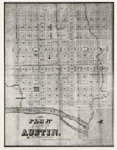
PICA 00331
Austin's history has been filled with events great and small, significant and trivial, historic and amusing. All have contributed to building the city that is first in our hearts. Finding these milestones is one of the pleasures of conducting research in the Austin History Center.
Lost Victorian Austin
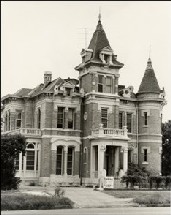
PICH 00696
In the early 1970s, just as the historic preservation movement was flowering throughout the nation, Austin lost three significant Victorian-style houses in the central downtown area: the Butler House, the Houghton House, and the Hunnicutt House.
Jane McCallum/Suffrage Movement

PICB 13189
Drawing on materials from the Jane McCallum Papers (AR.E.004), this exhibit looks at the work of the Austin Suffrage Association and women who played key roles in the movement.
Red Points and Ration Cards
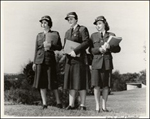
PICA 27170
An exhibit exploring life in Austin during World War II when Austin was known as a "Home Away from Home" for over 20,000 military personnel and their families. Austinites found ways to entertain the troops as they came into the city each weekend from nearby Camp Gary, Fort Hood, Camp Swift, and Bergstrom Field. Join us for a look at life in Austin during World War II.
Just Outside Austin
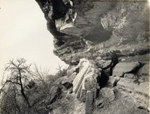
PICA 20591
This exhibit explores the rural areas surrounding Austin, including North, Northeast, East, West and Northwest areas of Travis County, Pflugerville, Manor, Sprinkle, Hunters Bend, Manchaca, and Wheatville.
Capitol Views
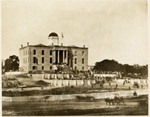
C00253
Originally created to celebrate the 100th anniversary of the Capitol in 1988, this exhibit depicts the history that led up to the need for a new Capitol building, the construction, the celebration of the completion, and the building as a place of work and decision making.
Green Growth
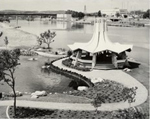
PICA 09283
The exhibit "Green Growth" profiles some of the individuals and organizations that have given of themselves for the enhancement of Austin's natural beauty, and the public and private spaces that they have enhanced.
Austin Streets
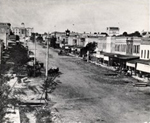
PICA 02442
This exhibit looks at some of Austin's major streets over time and provides the origins of many street names.
Austin at Work
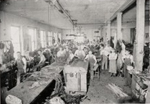
PICA 15506
A look through the photo files of the Austin History Center helps illustrate some of the changes over time in working life of Austinites.
Hyde Park
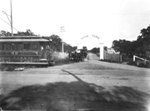
PICA 02628
This exhibit celebrates Hyde Park, portraying life in the streetcar era when doors were never locked and did not need to be. These photographs offer a portal through which viewers can step back in time to experience for themselves life on the avenues.
Exhibit Videos
Exhibit Videos link
Abriendo Brecha-Making Our Way
Created in conjunction with the Austin History Center's exhibit, "Mexican American Firsts: Trailblazers of Austin and Travis County," in August of 2010.
The First Picture Shows: Historic Austin Movie Houses
Created in conjunction with the Austin History Center's exhibit of the same title in spring of 2012.

